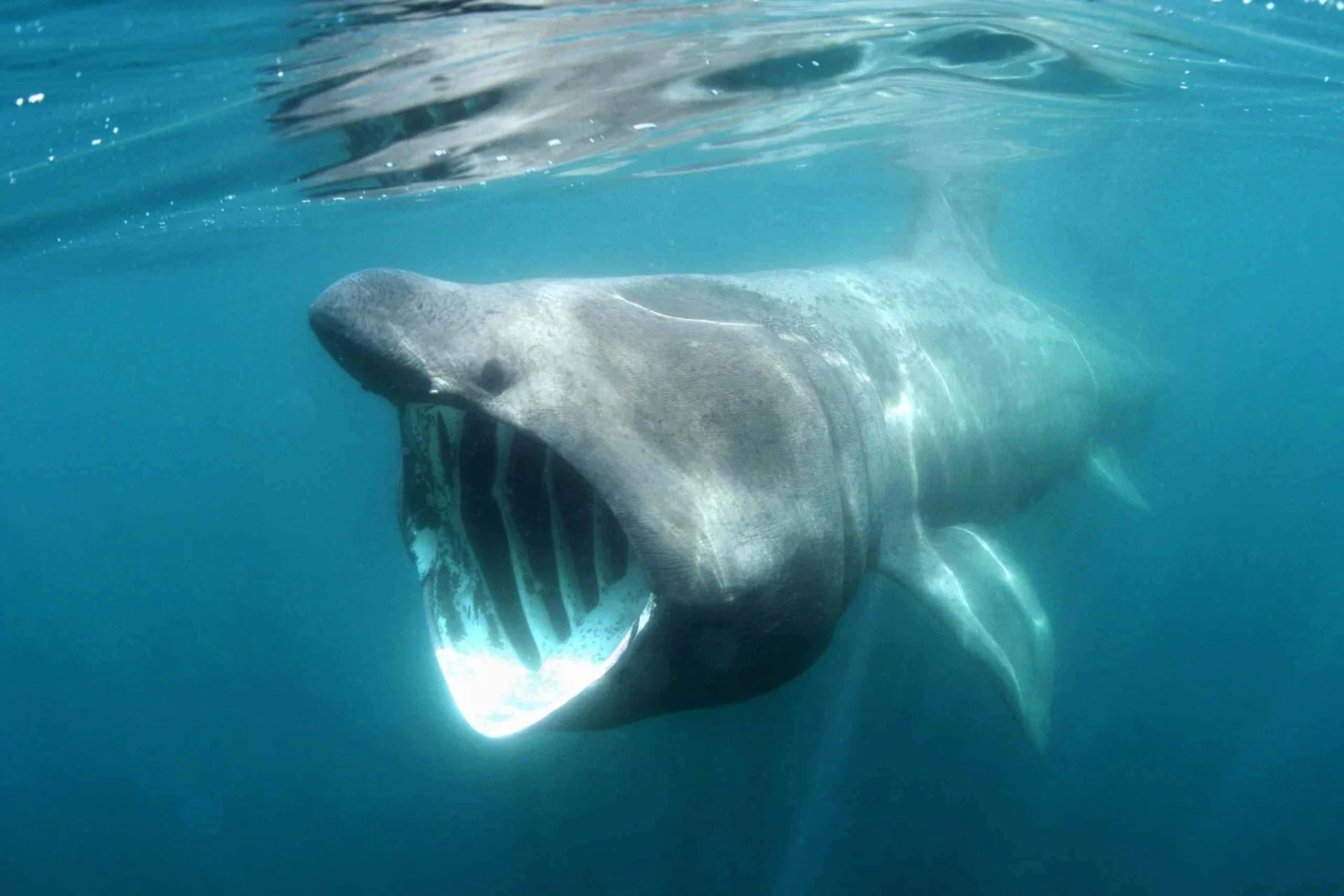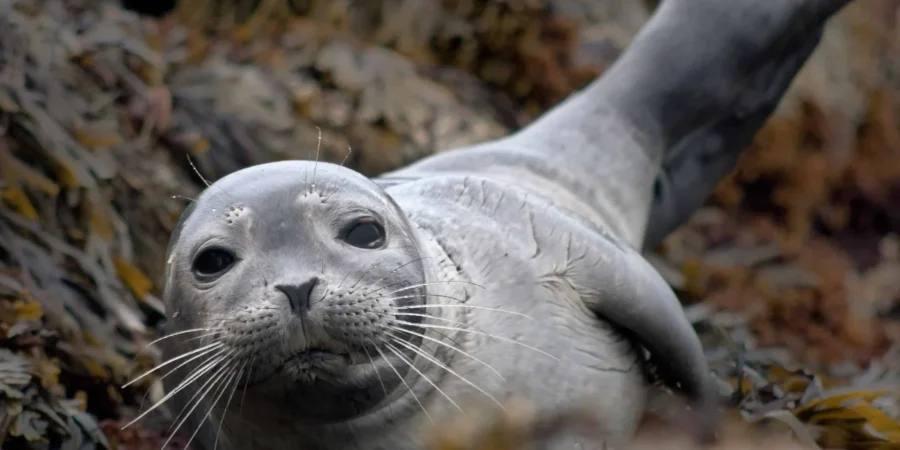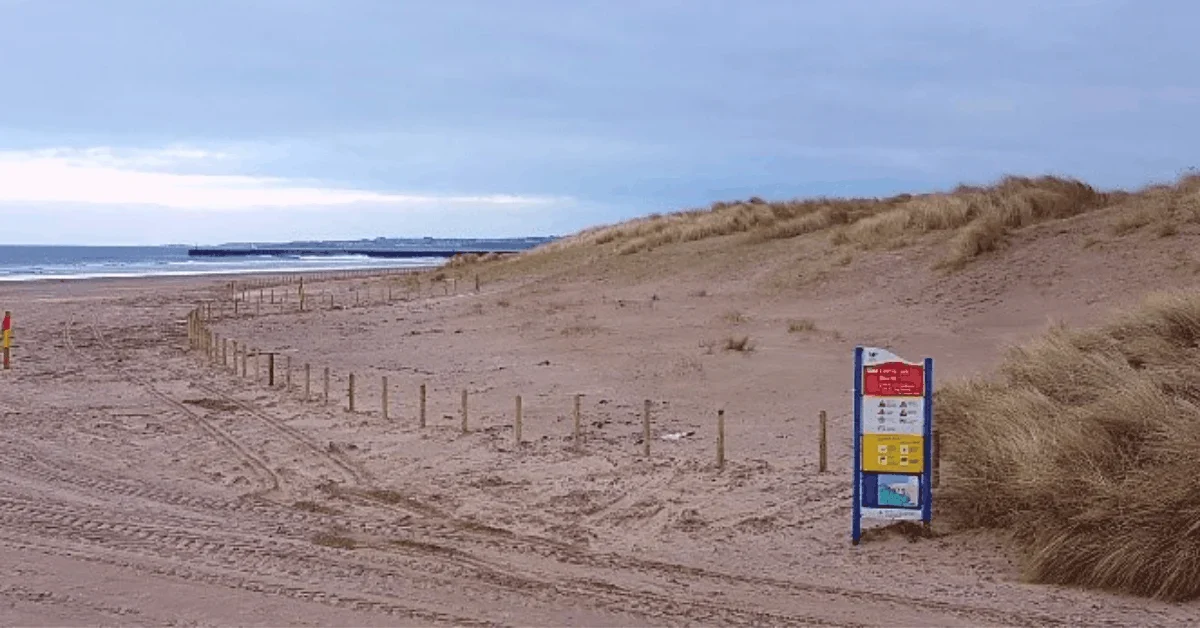The waters around NI are full of a rich array of marine wildlife including dolphins, sharks, seals, jellyfish and much more. We have eleven species of sharks and two species of seals. You mightn’t always have the opportunity to see all these beautiful creatures but they are part of the rich biodiversity around our shores, and it’s vitally important that we don’t make life anymore difficult for nature in face of climate change.
Here’s the lowdown on seals and sharks, and tips for how to behave the next time you spot some marine life on the beach.
Seals
Local beauty spots including beaches are enjoying increased visitor numbers and we are more frequently coming into contact with marine life including seals. There are two species of seal that live around our coast, the larger Grey seal which tends to be seen in exposed areas and the smaller Harbour or Common seal which prefers sheltered habitats.
While normally observed in the water, both species of seal will frequently haul out on rocks or the beach to rest, warm up and breed. It is a normal part of the life cycle of seals to haul out ashore and it does not necessarily indicate that the animals are sick, injured or have been abandoned. However, as a result of this behaviour, they are very sensitive to disturbance by human activities.
Marine Conservation, Disturbance and the Effects
The effect of potential disturbance to wildlife may be increased stress from the encounter leading to injury of the animal while trying to escape or the possible abandonment of young, particularly applicable to harbour seals during the June-July pupping season and grey seals during the September-November pupping season. As with any large wild mammal, they may also inflict a powerful bite if they or their young feel threatened.
Both species of seal are protected under The Wildlife (Northern Ireland) Order 1985 (as amended) from intentional or reckless disturbance, with penalties for these offences up to a maximum of £5,000 or up to six months imprisonment, or both.
You can find out more information on what to do if you think a seal is injured or distressed at DAERA Marine Conservation and Guidance
Sharks
Thirty-five species of sharks have been recorded in Irish waters, including the blue shark, porbeagle shark, lesser spotted dogfish and the second-largest shark in the world…the basking shark. Some of these live here all the time while others migrate through our waters. As apex predators, sharks play an important role in our oceans by keeping them healthy and in balance.

Northern Ireland Waters
The waters off Northern Ireland contain a diverse array of sharks, at least 11 species can be found in our seas. Despite their ferocious reputation, their slow growth, late maturity and small litters render them among the most vulnerable animals in the oceans, from fishing (both incidental or targeted) and damage to key habitats. During the summer months, one of the largest and most impressive species, the basking shark, can be seen feeding and even breaching clear of the surface around our coast. As this shark is particularly at risk from disturbance, it is now fully protected by law.
With sea temperatures set to rise, tropical species such as hammerheads and tiger sharks have been speculated to arrive to Irish and U.K. shores, and it is evident from recent reports that more shark species are venturing into our waters – a smooth hammerhead shark was reported on the edge of the continental shelf, south-west of Ireland!
Marine species such as basking shark, whales, dolphins, porpoises and seals are protected by international, European and national legislation throughout the UK. Offences can include intentional or reckless disturbance, taking, harming and killing, and in some cases, possession or sale of the species. Anyone found guilty of an offence may be fined up to £5,000.
You can find out more information about sharks and other marine animals here
What to know about Marine Wildlife Encounters
At the coast
- Do not chase, touch or feed marine wildlife.
- Do not creep up on seals, crowd them or make loud noises to prompt them to look towards you.
- Avoid seal haul-outs; observe seals from a distance and especially avoid groups of mothers and pups.
- If you encounter seals move away slowly and quietly.
- Keep dogs on a lead in areas where seals are hauled out.
On the sea
- If on a wildlife tour choose an operator accredited by the WiSe Scheme
- Boats/kayaks must keep their distance and allow for an obvious escape route for animals. Be aware if paddling or rowing that a silent approach may startle wildlife more.
- Boats should not crowd animals.
- Stay no longer than 15 minutes.
- Animals should not be pursued in the water and never approached head on.
- If an animal approaches, maintain a parallel course to it.
- Never cut across or go through a group.
In the sea
- Let any wildlife encounter be on their terms.
- Make sure your movements are steady and predictable; move gently at the first signs of disturbance.
- Take care with your feet or fins.
- Avoid flash photography.
If you see anyone intentionally or recklessly injuring, disturbing or harassing marine wildlife, the incident should be reported. Call the PSNI on 101.
- Describe your call as a wildlife crime report;
- Give details of the (potential) crime;
- Ask for an incident report number;
- Retain incident number and date.



